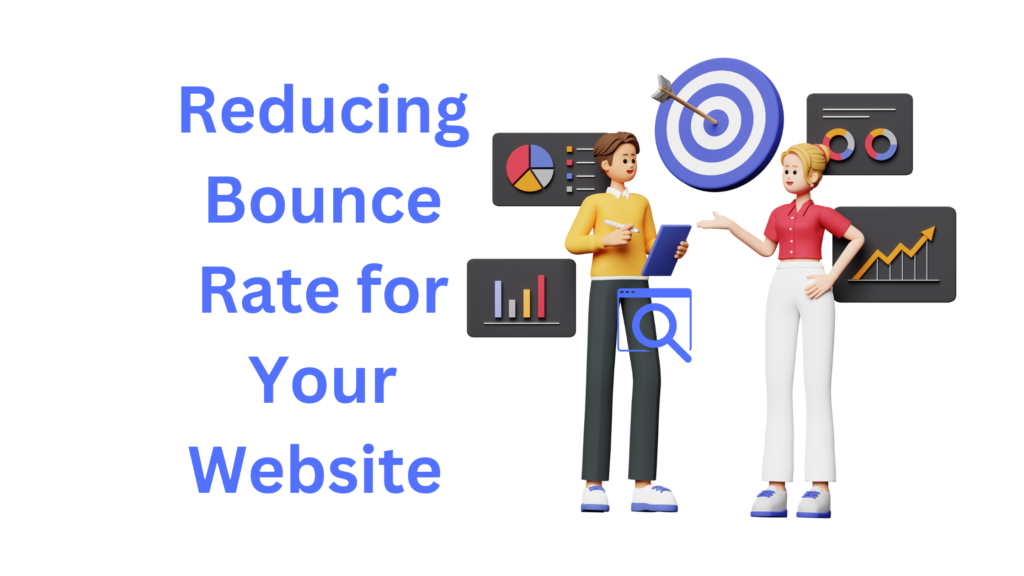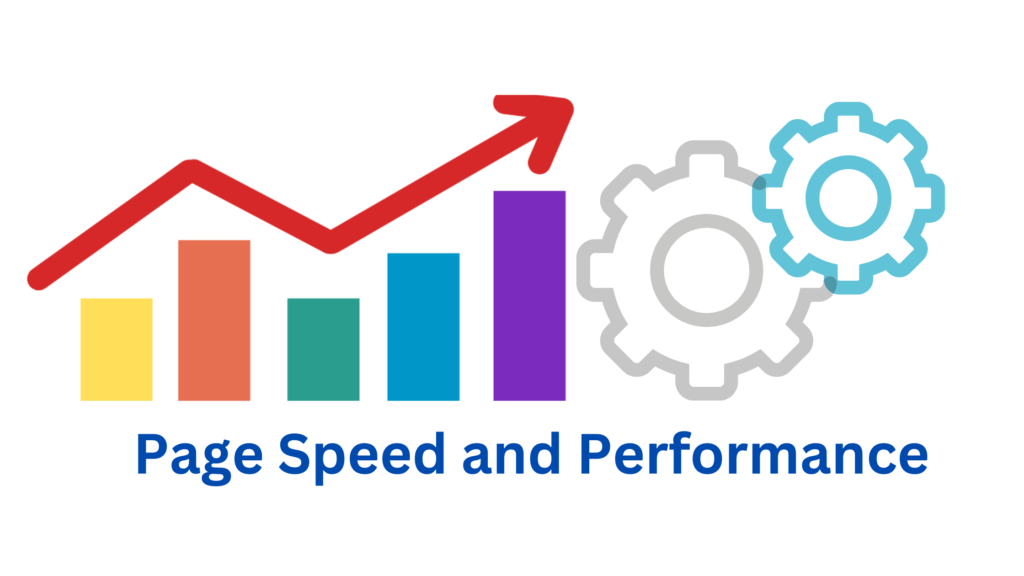Reducing Bounce rates for your website, a website’s success hinges on its ability to engage and retain visitors. One critical metric that reflects a website’s effectiveness is its bounce rate. Bounce rate measures the percentage of visitors who navigate away from a website after viewing only one page, signaling a failure to engage and convert them. High bounce rates can be detrimental to your website’s performance and overall success.
Reducing bounce rates is a top priority for webmasters, marketers, and business owners alike. In this comprehensive guide, we will delve into the various aspects of bounce rates, understand why they occur, and explore effective strategies to minimize them. By the end of this article, you’ll be equipped with valuable insights and actionable tips to optimize your website and keep visitors engaged.
Understanding Bounce Rate
Before we dive into the strategies, let’s start by understanding what bounce rate actually means. Bounce rate is the percentage of single-page sessions on your website, where visitors leave without interacting further or navigating to other pages. It’s important to note that a bounce can occur when a user closes the browser window, hits the back button, or remains inactive for a certain period of time.
Google Analytics calculates bounce rate for your entire website as well as individual pages, providing valuable insights into user behavior and page performance. While there is no universal benchmark for a good bounce rate, it is generally agreed upon that a lower bounce rate indicates better engagement and user satisfaction.
Factors Contributing to High Bounce Rate
To effectively reduce bounce rate, it’s crucial to identify the underlying factors that contribute to a high bounce rate on your website. Here are some common reasons why visitors may bounce from your site:
Poor User Experience
A high bounce rate can often be an indication of a poor user experience. If visitors are unable to find the information they’re looking for, encounter slow page load times, or experience navigation difficulties, they are more likely to leave your site without further engagement.
Irrelevant or Misleading Content
When visitors land on a page that doesn’t meet their expectations or fails to provide the information they were seeking, they are more likely to bounce. It’s important to ensure that your content is relevant, well-structured, and delivers on the promises made in search results or advertisements.
Lack of Visual Appeal
Website design plays a significant role in user engagement. If your site appears outdated, cluttered, or unattractive, visitors may be deterred from exploring further. Investing in a visually appealing and user-friendly design can help reduce bounce rate and improve overall user satisfaction.
Slow Page Load Times
In today’s fast-paced digital world, users have little patience for slow-loading websites. If your pages take too long to load, visitors are more likely to abandon your site and seek information elsewhere. Optimizing page load times is crucial for reducing bounce rate and retaining visitors.
Mobile Responsiveness
With the increasing use of mobile devices, it’s essential to ensure that your website is fully responsive and optimized for mobile viewing. If your site is not mobile-friendly, visitors on smartphones or tablets may have a poor user experience, leading to higher bounce rates.
Lack of Clear Navigation
Intuitive navigation is vital for guiding visitors to the content they are looking for. If your site lacks clear navigation menus or fails to provide a logical structure, visitors may become frustrated and leave your site. Implementing easy-to-use navigation can help reduce bounce rate and improve user satisfaction.
Strategies to Reduce Bounce Rate
Now that we understand the factors contributing to high bounce rate, let’s explore proven strategies to effectively reduce bounce rate and improve user engagement on your website. By implementing these techniques, you can create a more compelling user experience and encourage visitors to explore further.

Improve Page Load Time
One of the most critical factors affecting bounce rate is page load time. Visitors expect fast-loading websites, and if your pages take too long to load, they are likely to abandon your site. To improve page load time, consider the following strategies:
- Optimize image sizes to reduce file size and improve loading speed.
- Utilize caching techniques to store frequently accessed files and reduce server load.
- Minify HTML, CSS, and JavaScript files to reduce file sizes and improve loading speed.
- Utilize content delivery networks (CDNs) to distribute your website’s content across multiple servers, reducing latency and improving loading speed.
By optimizing page load time, you can significantly reduce bounce rate and provide a better user experience.
Enhance User Experience with Intuitive Navigation
Clear and intuitive navigation is crucial for reducing bounce rate. Visitors should be able to easily navigate through your website and find the information they are looking for. Consider the following strategies to enhance user experience with intuitive navigation:
- Implement a clear and consistent navigation menu across all pages of your website.
- Use descriptive labels and organize your menu items logically.
- Provide easy access to important pages, such as contact information, about us, and product/service offerings.
- Utilize breadcrumbs to help visitors understand their current location within your website’s hierarchy.
By improving the navigation experience, visitors are more likely to stay on your site and explore further.
Create Engaging and Relevant Content
Relevant and engaging content is essential for reducing bounce rate. Visitors should find value in the content you provide, encouraging them to stay on your site and explore further. Consider the following strategies to create engaging and relevant content:
- Conduct thorough keyword research to understand the topics and queries your target audience is searching for.
- Develop high-quality and informative content that addresses these topics and provides valuable insights.
- Use headings, subheadings, and bullet points to break up your content and make it more scannable.
- Incorporate multimedia elements such as images, videos, and infographics to enhance the visual appeal of your content.
By creating engaging and relevant content, you can capture the attention of visitors and reduce bounce rate.
Optimize for Mobile Responsiveness
With the increasing use of mobile devices, optimizing your website for mobile responsiveness is crucial. Visitors should have a seamless and enjoyable browsing experience, regardless of the device they are using. Consider the following strategies to optimize for mobile responsiveness:
- Utilize responsive web design techniques to ensure your website adapts to different screen sizes.
- Test your website on various mobile devices and browsers to identify any compatibility issues.
- Optimize images and other media elements for mobile viewing to improve loading speed.
- Implement touch-friendly navigation and buttons to enhance user experience on mobile devices.
By optimizing mobile responsiveness, you can provide a better user experience and reduce bounce rate for mobile visitors.
Improve Readability and Formatting
Readability and formatting play a significant role in reducing bounce rate. Visitors should be able to easily consume and understand your content without feeling overwhelmed. Consider the following strategies to improve readability and formatting:
- Use clear and concise language to convey your message effectively.
- Break up your content into short paragraphs and utilize headings and subheadings to organize information.
- Incorporate bullet points and numbered lists to make your content more scannable.
- Choose a legible font and appropriate font size to enhance readability.
- Use whitespace effectively to separate content and improve visual appeal.
By improving readability and formatting, visitors are more likely to stay engaged with your content and explore further.
Implement Internal Linking Strategies
Internal linking is an effective strategy for reducing bounce rate and encouraging visitors to explore more of your website. By linking to relevant and related content within your site, visitors can easily navigate to other pages and find additional information. Consider the following strategies for implementing internal linking:
- Identify key pages and articles that provide valuable information and link to them from your high-traffic pages.
- Use descriptive anchor text to provide context and encourage visitors to click on the internal links.
- Create content clusters or topic clusters to link related content together and provide a cohesive user experience.
- Regularly review your internal links to ensure they are up-to-date and relevant to the content.
By implementing internal linking strategies, you can reduce bounce rate and increase engagement on your website.
Optimize Meta Tags and Descriptions
Meta tags and descriptions play a crucial role in increasing click-through rates from search engine results and reducing bounce rate. When visitors see compelling and relevant meta tags and descriptions, they are more likely to click on your website and explore further. Consider the following strategies to optimize meta tags and descriptions:
- Use relevant keywords in your meta tags and descriptions to improve visibility in search engine results.
- Craft compelling and concise descriptions that accurately represent the content of your pages.
- Incorporate a call-to-action in your meta descriptions to entice visitors to click on your website.
- Regularly review and update your meta tags and descriptions to ensure they align with your content.
By optimizing meta tags and descriptions, you can increase click-through rates and reduce bounce rate.
Monitor and Analyze User Behavior
Continuous monitoring and analysis of user behavior can provide valuable insights into the effectiveness of your website and help identify areas for improvement. Consider the following strategies for monitoring and analyzing user behavior:
- Utilize web analytics tools such as Google Analytics to track bounce rate, page views, and other relevant metrics.
- Set up conversion goals and track user actions to understand user engagement.
- Conduct A/B testing to compare different versions of your website and identify which elements resonate better with visitors.
- Utilize heatmapping and session recording tools to gain visual insights into how visitors interact with your website.
By monitoring and analyzing user behavior, you can make data-driven decisions to optimize your website and reduce bounce rate effectively.
Enhance Page Speed and Performance
Page speed and performance are critical factors in reducing bounce rate. Visitors expect fast-loading websites, and if your pages take too long to load, they are likely to abandon your site. Consider the following strategies to enhance page speed and performance:
- Optimize images and multimedia elements to reduce file size and improve loading speed.
- Minify CSS and JavaScript files to improve loading speed.
- Utilize browser caching to store frequently accessed files and reduce server load.
- Leverage content delivery networks (CDNs) to distribute your website’s content across multiple servers, reducing latency and improving loading speed.

By enhancing page speed and performance, you can provide a better user experience and reduce bounce rate.
Create Compelling Calls-to-Action (CTAs)
Compelling calls-to-action (CTAs) can be effective in reducing bounce rate by encouraging visitors to take further action on your website. Consider the following strategies for creating compelling CTAs:
- Use clear and concise language in your CTAs to communicate the desired action.
- Place CTAs strategically throughout your website, including within relevant content and on high-traffic pages.
- Utilize contrasting colors and attention-grabbing design elements to make your CTAs stand out.
- Incorporate persuasive language and incentives to entice visitors to click on your CTAs.
By creating compelling CTAs, you can increase user engagement and reduce bounce rate.
In Conclusion
Reducing bounce rate is crucial for improving user engagement, enhancing website conversions, and driving better results for your online business. By implementing the strategies outlined in this comprehensive guide, you can create a more compelling user experience, optimize your website for better performance, and encourage visitors to explore further. Remember to continuously monitor and analyze user behavior to make data-driven decisions and optimize your website effectively. With an optimized bounce rate, you can improve user satisfaction, increase site rankings, and achieve greater success.
